Recent Articles
Popular Makes
Body Types
2020 Honda Pilot Road Test and Review
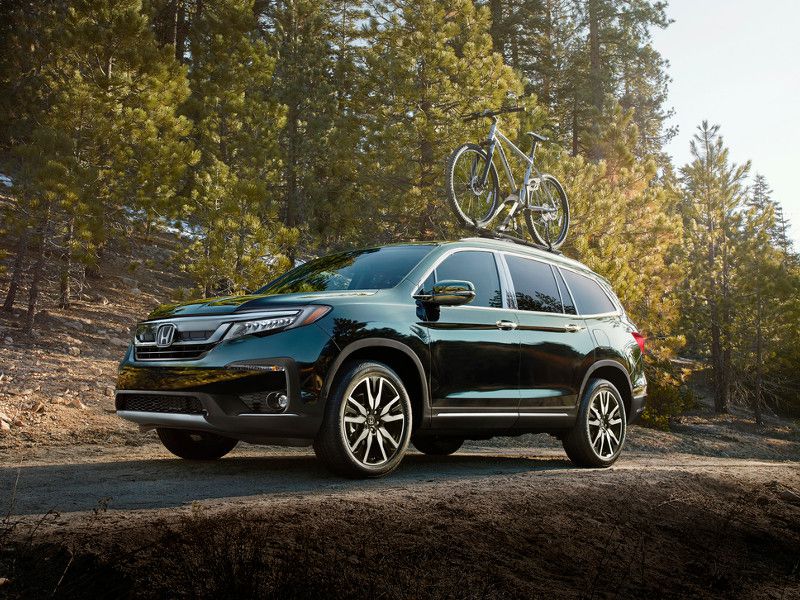
2020 Honda Pilot driving near trees ・ Photo by Honda
Black on black on black. That’s what Americans like, and with the 2020 Honda Pilot, that’s what they’re getting with the debut of the new Black Edition trim level. It’s painted black, and it has blacked-out trim, black wheels, a black leather interior with red accents, and red ambient lighting. Able to stay clean for about five seconds, the new 2020 Pilot Black Edition sadly does not include unlimited use of your local car wash.
Nearly half a decade has passed since the Pilot received its last complete redesign, and competition in the mid-size three-row SUV segment has gotten tougher thanks to new models like the Hyundai Palisade, Kia Telluride, Subaru Ascent, and Volkswagen Atlas. As a result, Honda’s mainstay family crossover SUV is less popular than it used to be — though it's no less capable of safely transporting your family and belongings. We put a new Pilot Black Edition to the test in suburban Los Angeles, hauling kids, getting groceries, and taking a short road trip. It remains worthy of your consideration.
2020 Honda Pilot Configurations and Prices
The 2020 Honda Pilot lineup starts with the LX trim level, which costs $32,770 including the $1,120 destination charge. However, it lacks many of the Pilot’s appealing comfort, convenience, infotainment, and safety features. For those, the Pilot EX is the ticket to ride at $35,650. Choose the Pilot EX-L ($39,080) for leather seats and several niceties that can make vehicle ownership even more enjoyable.
The Touring trim ($43,840) goes several steps further, with 20-inch wheels, a premium sound system, navigation, rear-seat entertainment, Wi-Fi, and more. All-wheel drive is a $2,000 option on the LX, EX, EX-L, and Touring trim levels. It comes standard with the Pilot Elite ($49,340), along with heated and ventilated front seats, heated second-row captain’s chairs, a heated steering wheel, a panoramic glass roof, wireless smartphone charging, and more. The Pilot Black Edition tops the SUV’s lineup, priced at $50,840. It comes with everything included in the Elite plus the blacked-out cosmetic elements we mentioned earlier.
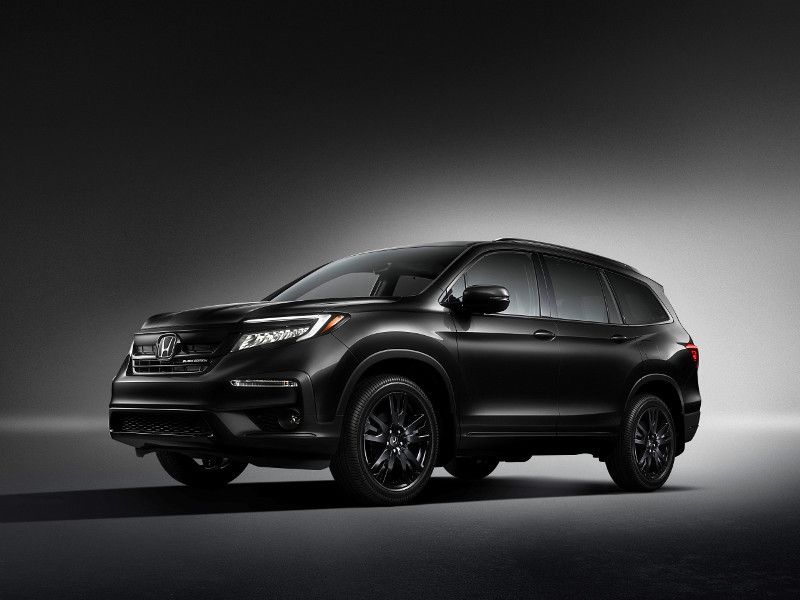
Photo by Honda
Function Over Form
Last redesigned for the 2016 model year, the Pilot isn’t what you’d call good-looking. Back then, Honda replaced the chiseled, rugged second-generation Pilot with something resembling a minivan. In 2019, fresh styling details gave the Pilot a tougher look, and the new Pilot Black Edition builds on those changes with a popular custom appearance. Even so, if design is a key consideration when you’re choosing a new family-sized SUV, this segment is loaded with attractive alternatives.
Featuring perforated leather, the Pilot Black Edition’s interior features quality materials and construction. Again, the design and layout are reminiscent of a minivan, but this is a good thing. Storage is everywhere, visibility is exceptional, and the controls are laid out in a logical fashion. There are a few missteps: Some people won’t like the transmission controls, a set of buttons and switches on the center console. The infotainment system lacks a radio tuning/navigation zoom knob. And the gloss-black interior trim collects a ridiculous amount of dust, lint, and fingerprints.
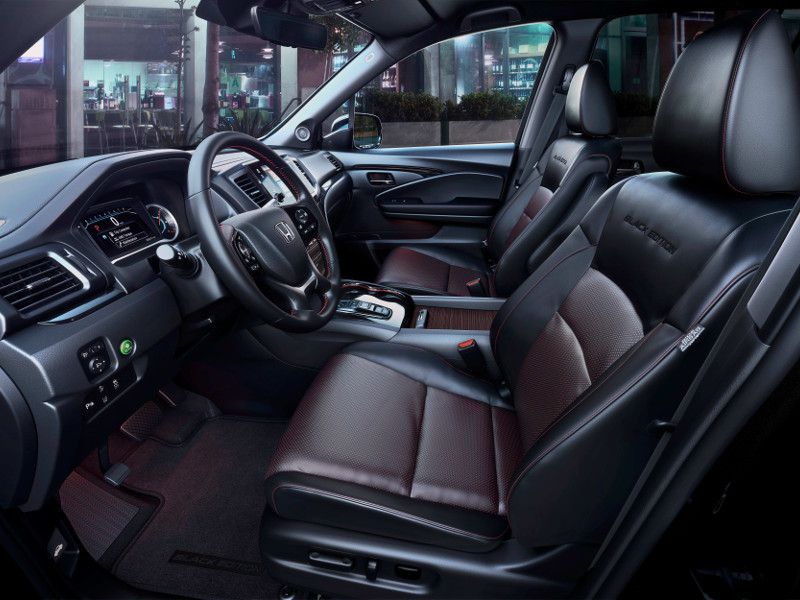
Photo by Honda
Impressive Comfort and Cargo Space
Driver comfort is excellent. Most Pilots have a 10-way power-adjustable driver’s seat, and the Black Edition includes both heated and ventilated front seats and a heated steering wheel. You do sit low in relationship to the Pilot’s roof, though, and limited seat track travel means tall people can’t take advantage of this added headroom. The front passenger’s seat lacks only a seat height adjuster to match the driver’s seat comfort levels.
The second-row seating is roomy, and most Pilots include triple-zone automatic climate control. The third-row seat is adequate for adults if the second-row seats are moved forward, but pre-teens or younger will be happiest in this location. Cargo space measures 16.5 cubic feet behind the third-row seat, including the handy underfloor storage area. Fold the third-row seat down, and the Pilot supplies a generous 46.8 cubic feet of space. Maximum volume measures 83.9 cubic feet behind the front seats.

Photo by Honda
Practical and Useful On-Board Technology
Starting with the EX trim, the 2020 Pilot offers increasing levels of onboard technology — ranging from a comprehensively equipped infotainment system to a Cabin Talk in-vehicle public announcement feature. Cabin Talk is for parents who don’t like yelling at their kids. Using it, the driver can speak in a normal voice that is amplified through the Pilot’s stereo speakers and through the headphones that come with the available rear entertainment system. CabinControl is another unusual Pilot feature. It allows passengers to pair their own devices to the Pilot and take control of the music and climate system. Frankly, I don’t think this is a good idea, but your household’s opinion might differ.
All but the Pilot LX include Apple CarPlay, Android Auto, and text messaging support. The Touring, Elite, and Black Edition up the ante with navigation, rear entertainment, a premium sound system, Wi-Fi, Honda Link subscription services, and more.
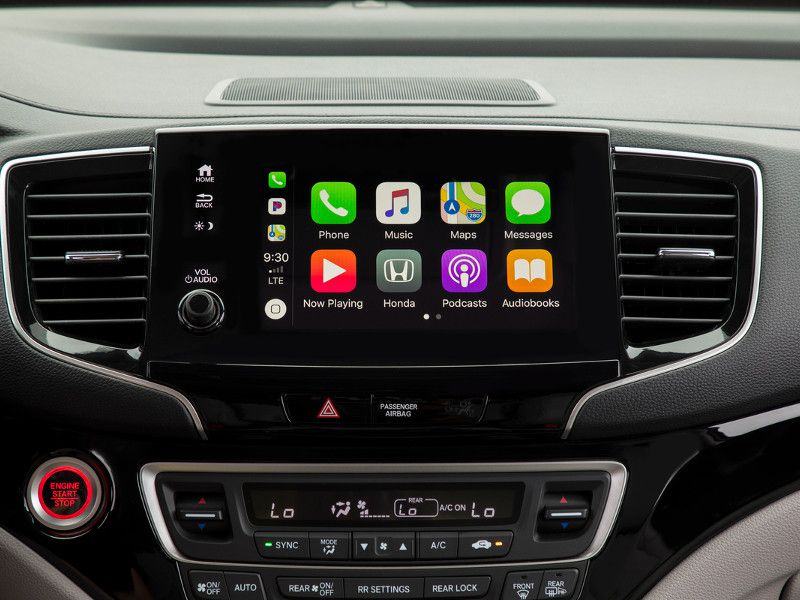
Photo by Honda
Safe and Secure, but Some Tech Needs Refinement
Honda Sensing is a collection of advanced driving assistance systems, and it comes standard on every 2020 Pilot. It includes the usual driving and collision avoidance aids, with the exception of a blind-spot monitoring system with rear cross-traffic alert. In order to get that, you need EX trim or higher.
In use, the Pilot’s Honda Sensing technologies lack the refinement and satisfaction of many competitors' systems. In particular, the adaptive cruise control’s distance management behavior is aggravating due to obvious braking and perceptible surges of acceleration as the technology tries far too hard to precisely maintain the desired following distance. Between this behavior and the steering wheel wobble that signals inadvertent lane departure, you might be inclined to shut Honda Sensing off. The Touring, Elite, and Black Edition have upgraded full LED headlights, which earn the Pilot a 2019 Top Safety Pick rating from the Insurance Institute for Highway Safety. A reflection of the design’s age, front-passenger protection in the institute's small-overlap frontal crash test scored Acceptable rather than Good. In other IIHS tests, the SUV receives top ratings.
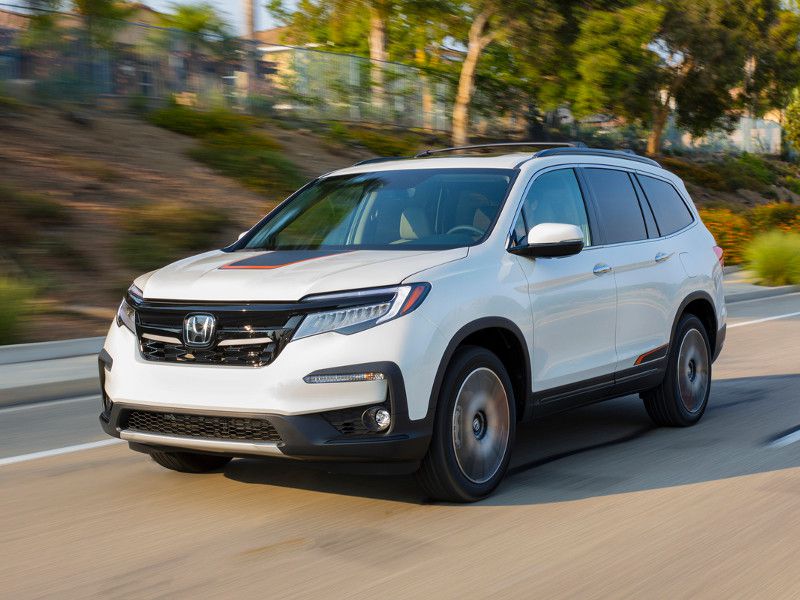
Photo by Honda
Terrific Powertrain, Especially With AWD
One of the best things about the 2020 Pilot is its engine. Powerful, smooth, and responsive, the 280-hp, 3.5-liter V6 feels like it makes more horsepower than that. The engine powers the Pilot’s front wheels through a six-speed (LX, EX, EX-L) or nine-speed (Touring) automatic transmission. Torque-vectoring all-wheel drive is optional unless you select the Elite or Black Edition trim, each of which pairs the nine-speed with AWD as standard equipment.
As part of the 2019 refresh, Honda recalibrated the Pilot’s nine-speed automatic, and it’s much more satisfying than before. Now, it accelerates smoothly from a stop and delivers quick, concise gear changes as the SUV picks up speed. According to the EPA, the Pilot Black Edition should get 22 mpg in combined driving. During my testing, the SUV returned 20.3 mpg on my test loop. More than anything, that result reflects how unexpectedly fun to drive the Pilot is.

Photo by Honda
Athletic Handling, Especially With AWD
Equipped with what is essentially the same Super Handling All-Wheel Drive (SH-AWD) system found in the Acura MDX, the Honda Pilot’s Intelligent Variable Torque Management 4-wheel drive (i-VTM4) system can put up to 70% of powertrain output to a single rear wheel. And when a Pilot has the 20-inch wheels and tires that are standard on the Touring, Elite, and Black Edition, i-VTM4 makes for quite an entertaining drive.
As is true of any Honda, the Pilot’s light and nimble feel from behind the wheel, combined with suspension tuning that provides a deft balance between ride comfort and handling, makes this SUV enjoyable regardless of the mission. The fun doesn’t stop when the pavement ends, though the Pilot’s 7.3 inches of ground clearance will put the kibosh on any serious off-roading adventures. A Snow/Sand/Mud driving mode helps with traction in commonly encountered situations.
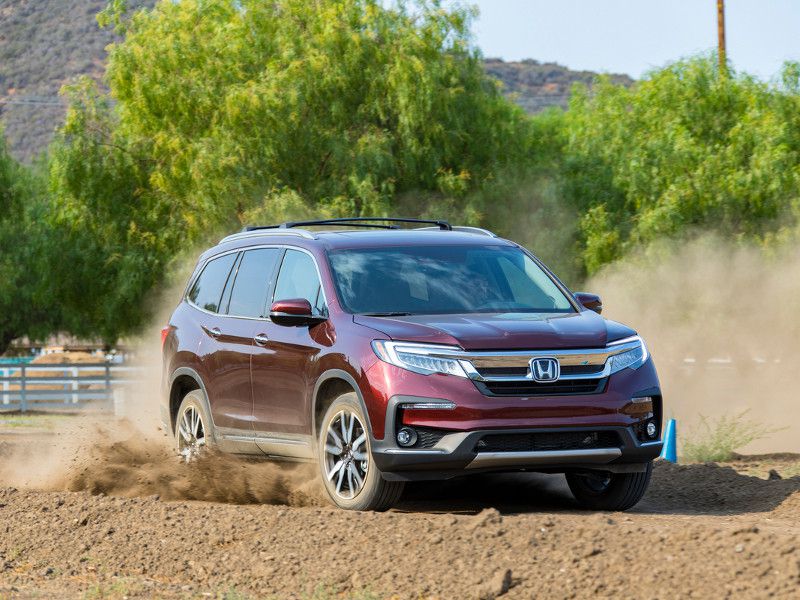
Photo by Honda
Stiff Competition in Expanding Segment
Since the Pilot’s last redesign, the mid-size three-row crossover SUV segment has expanded by four nameplates: Hyundai Palisade, Kia Telluride, Subaru Ascent, and Volkswagen Atlas. Furthermore, two key competitors, the Ford Explorer and Toyota Highlander, are redesigned for 2020. And growth in the five-passenger mid-size SUV segment — which now includes the Chevrolet Blazer and Honda’s own Pilot-based Passport — could also potentially reduce interest in the bigger Pilot.
Given all of this change in the mid-size SUV class, it’s somewhat remarkable that Pilot sales declined by just over 15% in 2019 (by comparison, the Explorer fell nearly 30%). That made the Pilot the fourth-best-selling model in the segment in 2019, behind the Highlander, Explorer, and Chevrolet Traverse.

Photo by Toyota
A Honda Pilot makes life easier.
While I’m no fan of the Pilot’s styling, or the Black Edition’s dust and lint magnetic properties, this is an easy SUV to like. Interior utility is exceptional, driver-seat comfort is terrific, and the fuel economy is decent. The Pilot is both simple and enjoyable to drive, and it boasts modern technology as well as strong safety ratings.
In short, it makes life easier to live, perhaps one of the most important missions of any family-sized SUV. Though the 2020 Honda Pilot is aging fast, it remains remarkably competitive. All it takes is a test drive — and then living with one on a daily basis — to understand why.
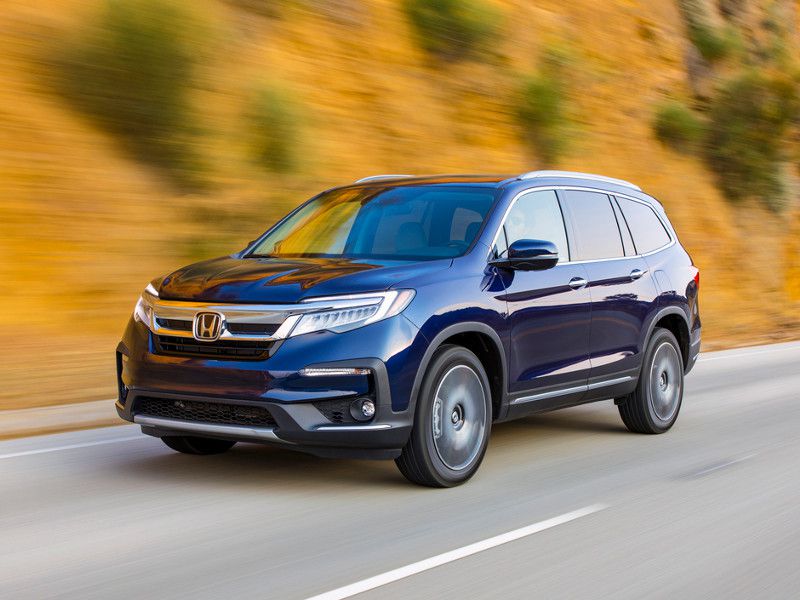
Photo by Honda